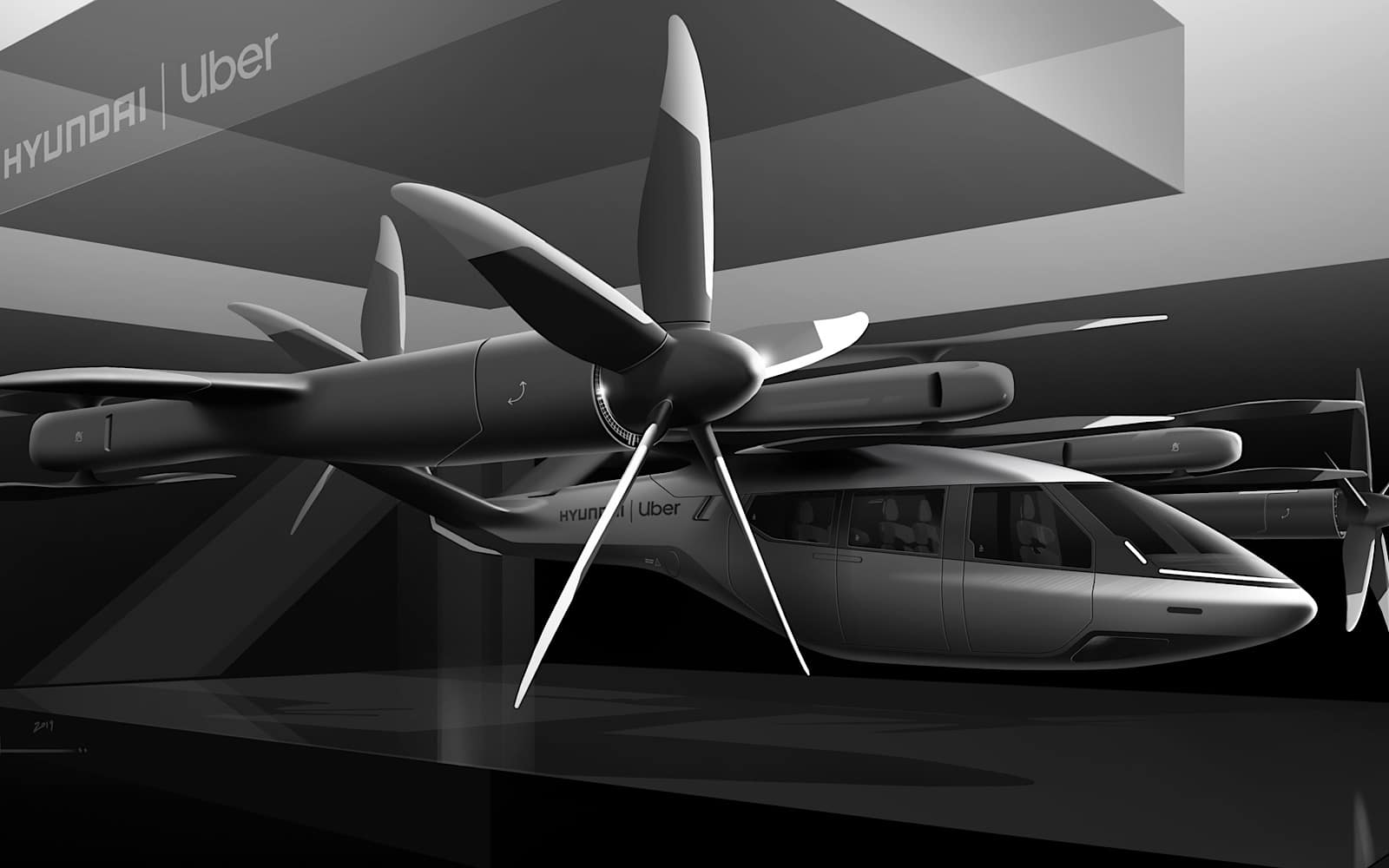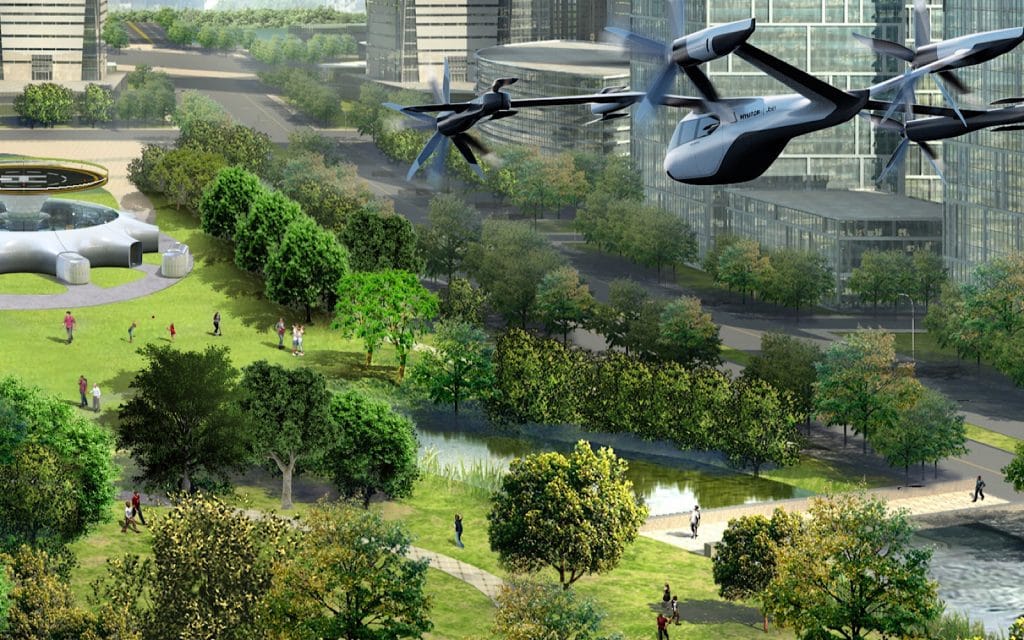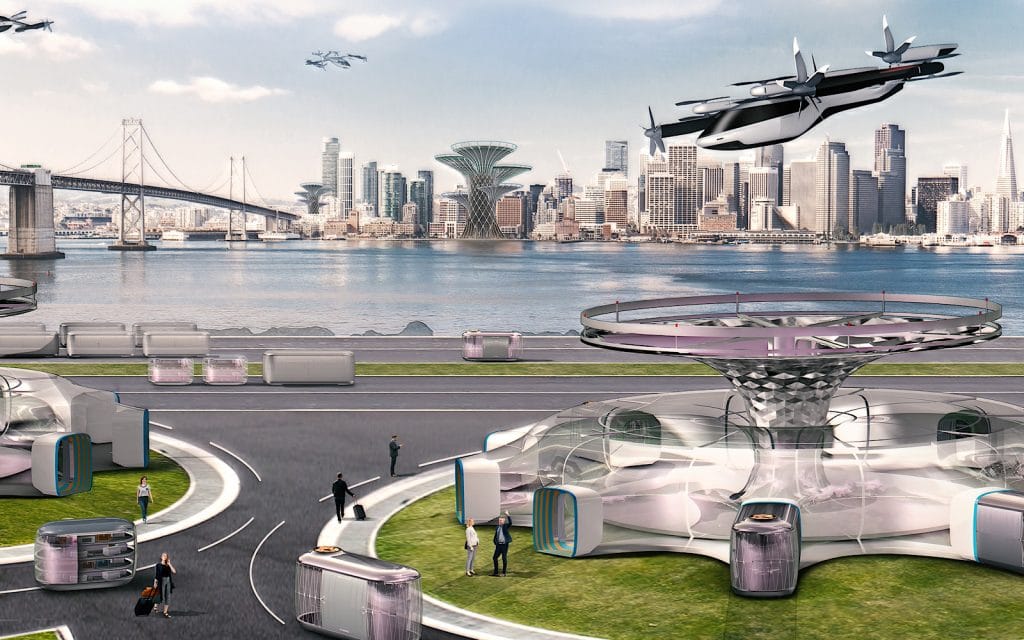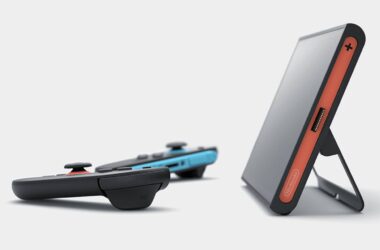The cities of the future could be connected by a flying car of sorts, as Hyundai shows off what it has coming for the Uber Air service.
Even though science fiction has long painted a vision of flying cars, the world hasn’t really caught up yet. Humans don’t dart around from place to place with rocket packs or flying vehicles, and we’re generally moving about using cars or public transport for small trips, or aircraft for longer ones.
But the future is a different beast, and companies that have become known for transport are looking to new technologies and ideas to move people differently.
In fact at CES this year, Hyundai has announced a few directions that its research team has found that will see humans traversing cities differently. From land to air, it appears the future isn’t just ahead, but also coming up. Literally.
Uber is elevated
Last year, Uber hinted that it was working on something that would push humans upwards, taking Uber to the Air with a flying taxi service of sorts.
This week, Uber has confirmed that it’s been working with Hyundai to take this concept to the sky, arriving in the S-A1, a flying machine of sorts that will be able to fly on demand, and could change the nature of cities moving forward.
The approach is a little like a helicopter and a little like a drone, with a multi-propeller concept that will see people ferried from one location to another, flying on their own time, rather than necessarily relying on airlines.
“We will be able to fly on demand, rather than fitting our lives around an airlines schedule,” said Jaiwon Shin, Head of Urban Air Mobility for Hyundai. “I like to call this ‘Liberation from Grid Lock’ and [the] ‘Democratisation of Flight’.”
Launch of this service is expected in 2023, and passengers will take to the sky with an Uber Air Taxi, using one of the electric Vertical Take-Off and Landing (eVTOL) vehicles to fly from place to place.
While no demo of the the S-A1 flying taxi was provided, Hyundai suggests a cruising speed of up to 290 km per hour is possible, flying between 300 and 600 metres off the ground, and flying up to 100 kilometres in distance. That means the Uber Air Taxi may not replace a trip from Sydney to Melbourne, but could be a speedier way to get from either airport to their respective CBD.
Land-based movement, too
The Uber collaboration in the Hyundai S-A1 for Uber Elevate is just one of the methods of people moving Hyundai is looking into.
Also alongside it is the Purpose Built Vehicle or “PBV”, an automated vehicle that moves across roads of the future and can be built not just like cars or vans, but like living spaces.
Hyundai paints a picture where the city’s elements almost become modular, such as having hospital clinics come to patients by way of a movable people block, almost acting like an ambulance as it autonomously moves people to the hospital. These blocks could meet at hubs, guiding into place by bringing people together.
Australia’s involvement in the city of the future
While Hyundai’s and Uber’s connection is clear at CES, rolling out these developments to Australia may take a little bit longer.
“We’re just over a week into 2020, and while this Hyundai partnership presents another significant advancement in our Uber Air journey, our approach has always been to be thorough, and to collaborate closely with our local stakeholders and communities,” said Natalie Malligan, Head of Uber Elevate in Australia.
“We are focused not just on working towards our short-term launch goals, but also in laying the necessary foundations for a network that can scale sustainably in the longer-term,” she said.
Those foundations will definitely take time, and while Uber Air has a targeted date of 2023, it’s something that will eventually be something you can use.
Melbourne is one of the first cities around the world that is being tested for Uber Air, alongside Dallas and Los Angeles. Safety is obviously one of the critical issues, as is noise, and we can imagine the Victorian government will play a part in making sure Uber Air’s Australian plans proceed in a way that works, alongside Hyundai, Uber, and any other partner involved.
Last year, however, Uber Air suggested pilot test flights would begin in 2020, which suggests Hyundai’s prototypes could start to see production this year, and even be tested in at least one city.
That means it could be as early as this year that you’ll look to the sky to see the future of transport, and only a few more until you can try it for yourself.
Leigh Stark was flown to CES 2020 in Las Vegas, USA as a guest of the Consumer Technology Association (CTA).









